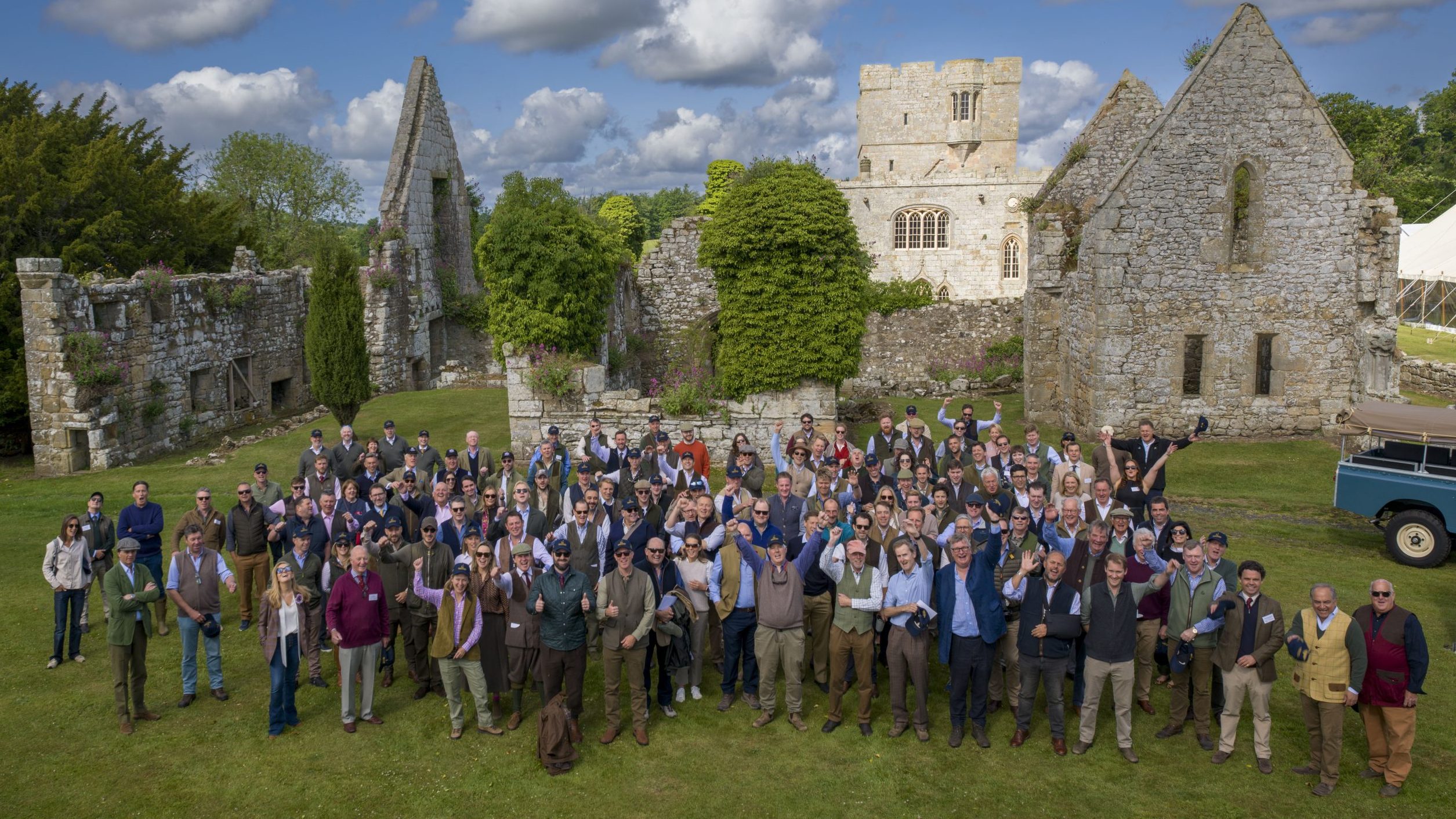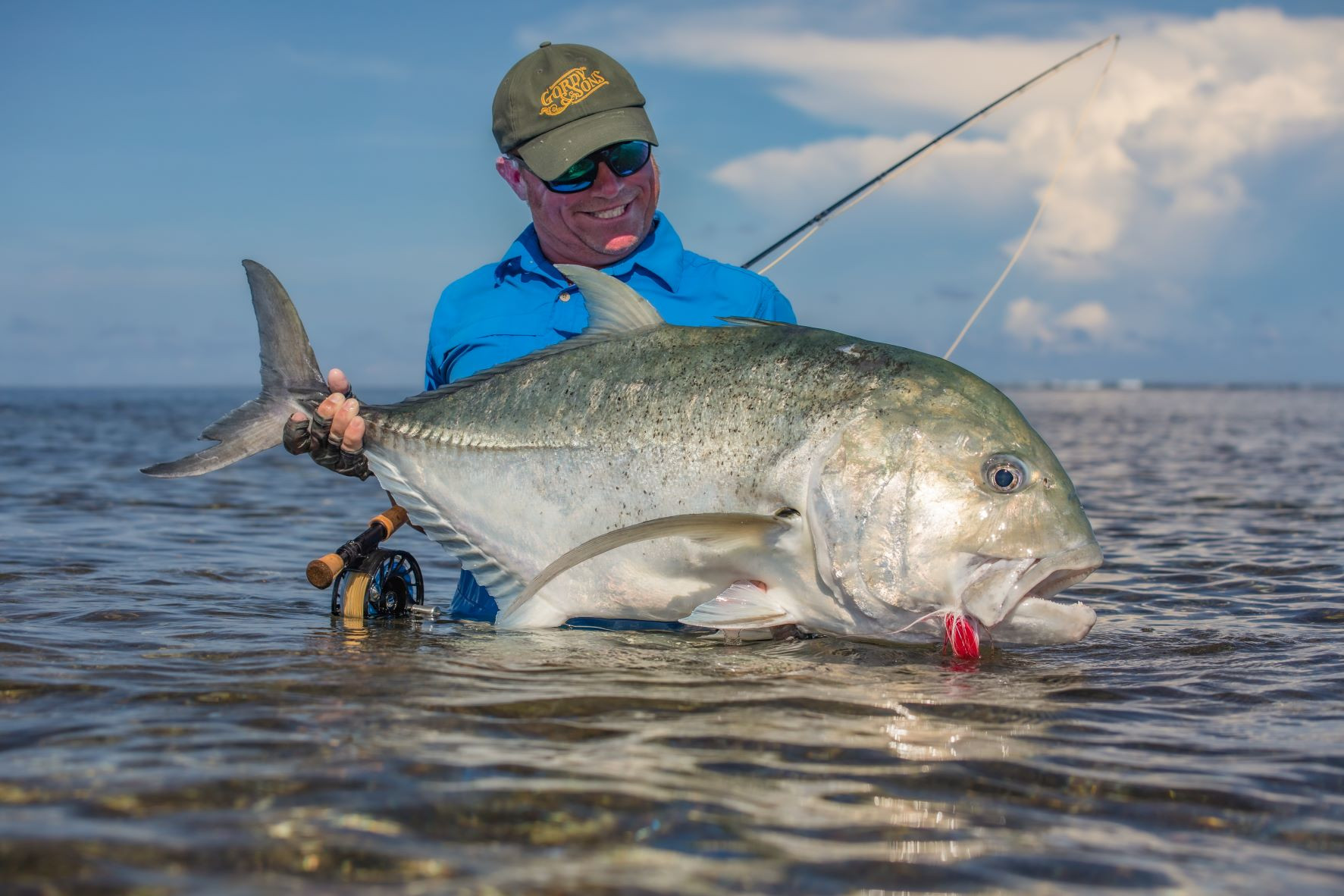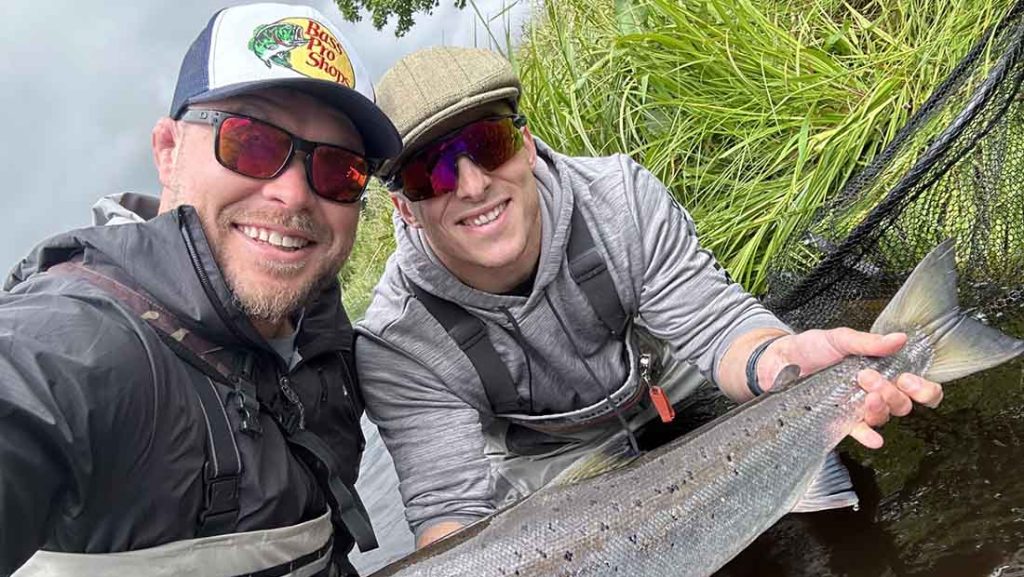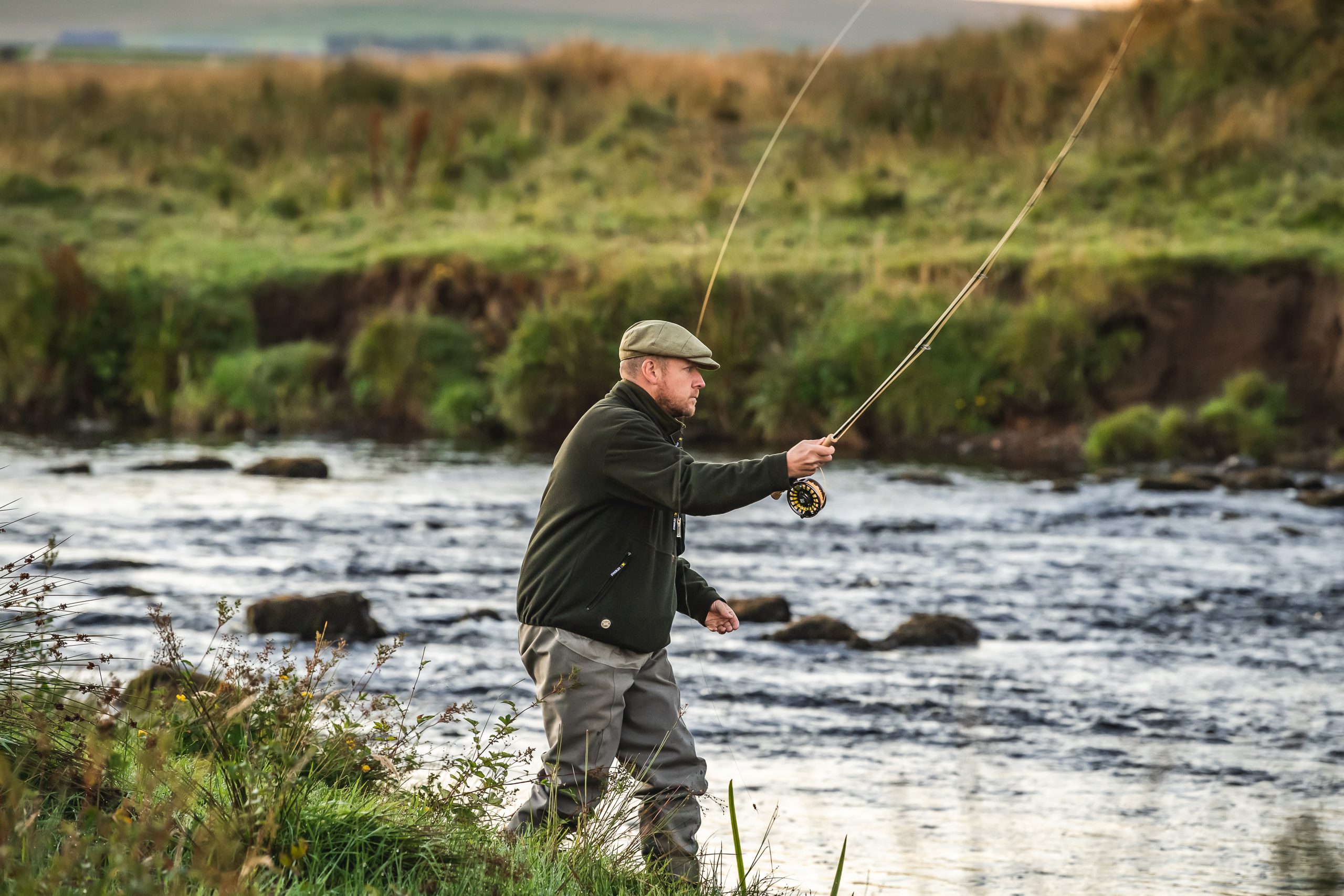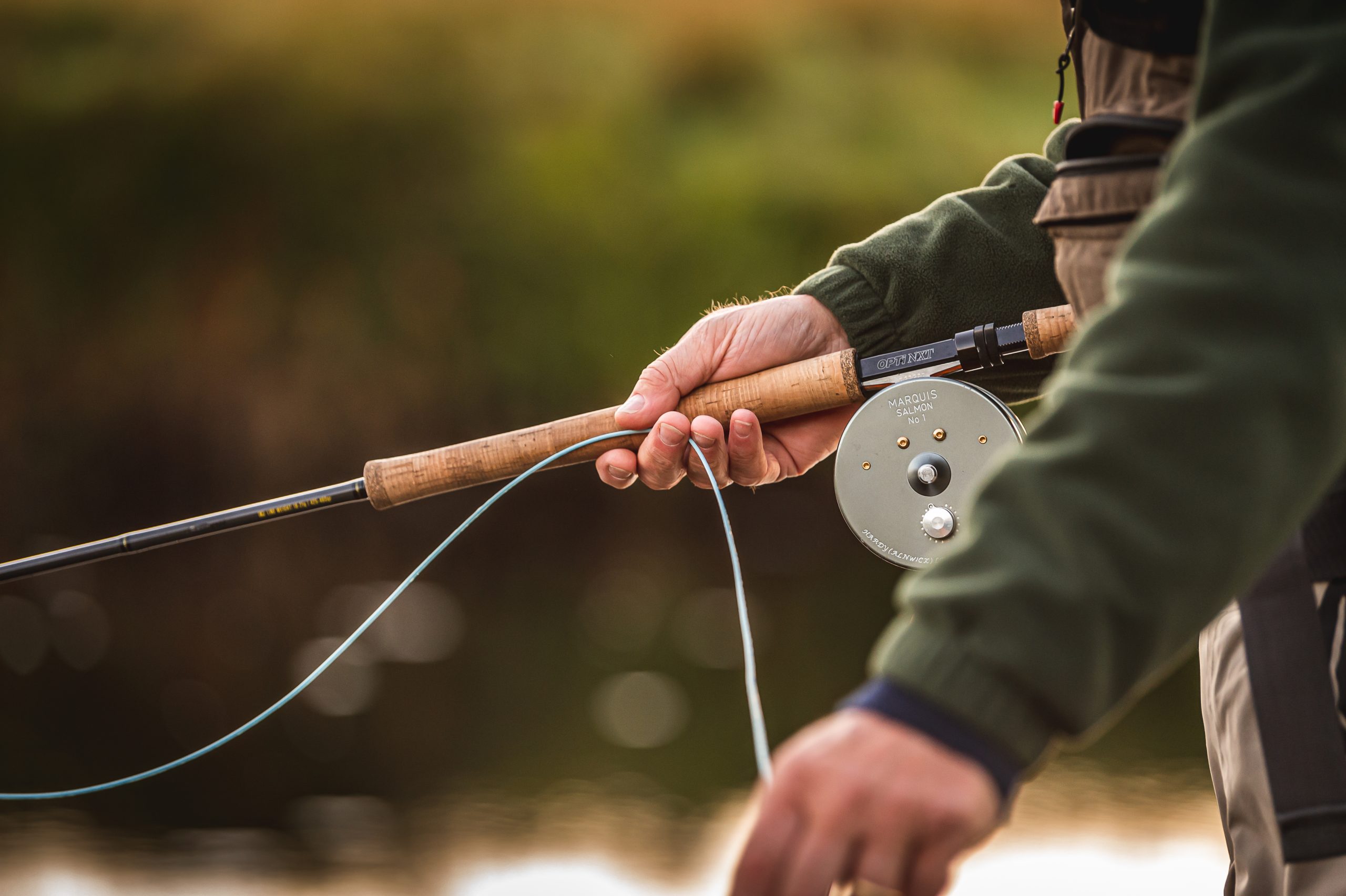Fly fishing
The GT capital of the world
Waking up in an air-conditioned, converted shipping container to white beaches, blue skies and the clearest, bluest ocean doesn’t get old –particularly when it is Cosmoledo Atoll in the Seychelles, widely known as the giant trevally (GT) fly fishing capital of the world.
Would you like to appear on our site? We offer sponsored articles and advertising to put you in front of our readers. Find out more.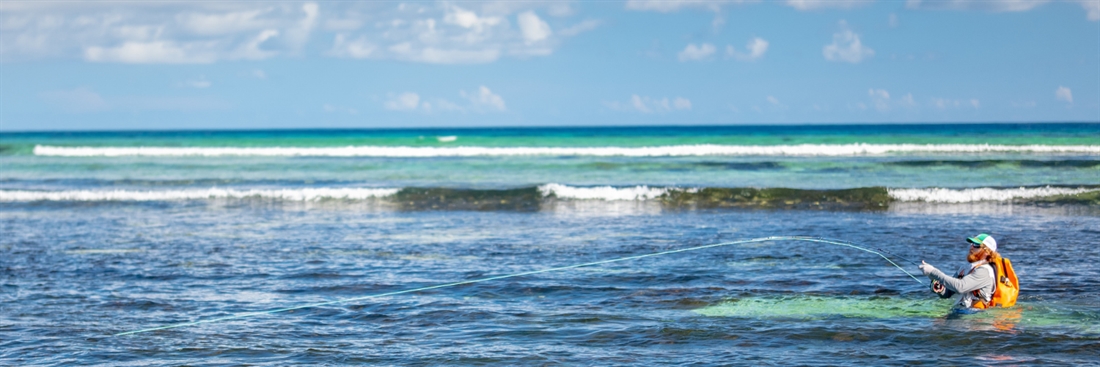
It’s worth every minute of the three flights and the boat ride that it had taken to get here, and we were in the middle of nowhere, on an uninhabited island, feeling like we had stepped onto the set of a Castaway film. I’d been lucky enough to be included in the Gordy & Son’s fishing expedition, along with Garrett Gordy, Kenton Thompson, Brandon Smith, Alan Jacobson, Paul Puckett, Chance Yarbrough, Jeff Harris, Baron Boyette and Daniel “Rooster” Leavens. Now I’ve spent a week fishing with a Gordy gang before, and it is, without question, a blast – the fishing during the day and evening jollity are approached in an equally serious manner, no half measures on either front.
We were booked in with the Alphonse Fishing Company, started by the legendary fisherman and explorer Keith Rose-Innes, whose team runs a smooth operation on various atolls in the Seychelles. Renowned for its pristine beaches and crystal-clear waters, the Seychelles is now firmly established as one of the top destinations for saltwater fly fishing the world over – hardly surprising: savage fish to fight with light tackle and, other than monsoon season, fantastically stable weather.
Cosmoledo Atoll is part of the Aldabra Group and one of the Outer Islands of the Seychelles, which has only recently had a handful of eco-cabins built on it (shipping container with an awning and air-con). The Seychelles, incidentally, is made up of 115 islands, and the waters cover a staggering1.4million km2, so the ocean is your oyster when it comes toa fishing trip. Cosmoledo is 1,030km south-west of Mahé, the main island of the Seychelles, and the Aldabra has been nicknamed the Galapagos of the Indian Ocean, thanks tothe staggering richness of the fauna. The Atoll (meaning ring-shaped reef) consists of several islands and measures17km from north to south, with vast sand flats dotted with islands, much of which is ideal for wading and the perfect habitat for a fantastic variety of fish.
And the fish of the Seychelles aren’t just any fish – these are some of the toughest, most hardcore fish you’ll find anywhere in the world, the bare-knuckle fighters of the oceans that will not give up. One of the most renowned is the GT. This gangster of the flats is fierce and powerful and will predate anything that moves, from crabs to eels and everything in between, including your fly if you get the retrieve just right.
We were here in the middle of March, and big tides were expected. For those of you who haven’t fished in the Seychelles it’s a remarkable place. Miles upon miles of hard, white sand means the wading is a pleasure, you are never stuck for somewhere to go, nor will you ever crowd your fellow fisherman. Be warned, though, the fishing here is all about the tides, and we were lucky enough to be booked in for a week of serious spring tides. The push of the tide brings the GTs, the apex predators of this watery world, into the lagoon from the deep blue –amazing, volcanic areas just outside the atoll. We used the boats when the tides weren’t timed right, but the best by far and most exciting fishing was wading the ‘push’– the moment the tide pours into the atoll, bringing with it these aggressive brutes. The first morning that I saw them, I don’t mind admitting, I felt intimidated and physically frightened to cast at one with such seemingly meagre tackle. These beasts of the deep don’t take any prisoners – they’ll smash up your equipment, and facing off against them, I felt like a Christian being thrown to the lions. These are, after all, the fish that on David Attenborough’s Blue Planet II were filmed hunting birds– in flight!
What makes these creatures even more exciting to fish for is that you hunt an individual specimen – so you watch the waves, and, there, under the surf, you’ll see the GT surfing the ‘window’, a clear section of the wave. Often enough, they’ll shadow rays or sharks, hoovering up whatever smaller prey animals are flicked up, and, as I soon learned, it is worth watching out for the rays – to see if they are ‘full’, i.e. have a GT shadowing them, or ‘empty’ and don’t.
The very first day set the pace of the week for me. I had been sent out on one of the boats with wildlife artist Paul Puckett, and as we cruised the atoll we spotted a monster GT. It was Paul’s turn to cast. The first cast brought theGT close to the boat, giving us a proper eyeball of it. It was huge, its mouth gaping towards the fly, but missing by a whisker. Paul showed a huge amount of skill, and, as the GT swooped under the bow, he flicked his line in reverse with an elegant back cast to the other side of the boat, and this time the fly found its mark. He worked the fish for a full 20 minutes with lactic acid building up, with our guide Cameron Musgrove skilfully manoeuvring the boat to help him until, to our dismay, with 400 yards of line out of the rod tip, we realised the beast had got under coral. Cameron carefully guided us in as close as he could to give Paul some slack, but no matter what he did, the line remained taught, caught on a coral-head.
Cameron didn’t hesitate – he stripped off, deep filled his lungs, and dove straight in. We waited, our breath held –and he reappeared, only to tell us that while he’d managed to release the line from one snag it looked like it was under two more coral heads. He deep filled his lungs again and dove once more, keeping us anxiously waiting for a minute this time, our nerves building with every second. Paul and I increasingly thinking we’d lost our guide – what was two minutes felt much, much longer. Then, the fish slowly appeared above the water before Cameron, clutching the fish, bobbed to the surface. This was the catch of the week: a 128cm GT – definitely one for the record books.
That week we caught 125 GTs overall – as well as 27 bonefish, seven triggerfish, a permit and a milkfish for good measure– making it a week that was as adrenalin-filled as any cape buffalo hunt I’ve been on. The pristine remote beauty and the emptiness of the place, shared with a group of people who are serious about stalking fish on flats made it a week to remember and without question the most intense, exciting, explosive fishing trip I’ve ever had. Add this to your bucket list immediately.
If you want to visit, go to: www.gordyandsons.com
Related articles
Fly fishing
On a spey quest
Avid fly angler and photographer Rasmus Ovesen embarks on his first ever trip to Greenland and loses his bubbling spey heart to the Kangia river
By Time Well Spent
Get the latest news delivered direct to your door
Subscribe to Fieldsports Journal
Elevate your experience in the field with a subscription to Fieldsports Journal, the premium publication for passionate country sports enthusiasts. This bi-monthly journal delivers unparalleled coverage of game shooting, fishing and big game across the UK and beyond.
Each issue offers a stunning collection of in-depth features, expert opinions and world-class photography, all presented in a timeless yet contemporary design.
Save 10% on shop price when you subscribe, with a choice of packages that work for you. Choose from Print & Digital or Digital only with each journal delivered directly to your door or via the app every other month, plus access to past issues with the digital back issue library.


Manage Consent
To provide the best experiences, we use technologies like cookies to store and/or access device information. Consenting to these technologies will allow us to process data such as browsing behavior or unique IDs on this site. Not consenting or withdrawing consent, may adversely affect certain features and functions.
Functional Always active
The technical storage or access is strictly necessary for the legitimate purpose of enabling the use of a specific service explicitly requested by the subscriber or user, or for the sole purpose of carrying out the transmission of a communication over an electronic communications network.
Preferences
The technical storage or access is necessary for the legitimate purpose of storing preferences that are not requested by the subscriber or user.
Statistics
The technical storage or access that is used exclusively for statistical purposes.
The technical storage or access that is used exclusively for anonymous statistical purposes. Without a subpoena, voluntary compliance on the part of your Internet Service Provider, or additional records from a third party, information stored or retrieved for this purpose alone cannot usually be used to identify you.
Marketing
The technical storage or access is required to create user profiles to send advertising, or to track the user on a website or across several websites for similar marketing purposes.


